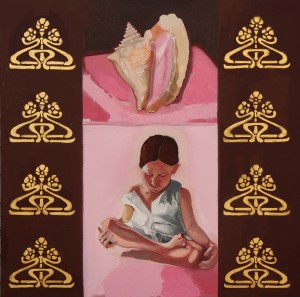It’s hard not to look at the ground as you walk. To set your sights low, and keep the world spinning, and try to stay grounded wherever you are. But every so often you remember to look up, and imagine the possibilities. Dreaming of what’s out there. Before long, you find yourself grounded once again. Grounded in the sense of being homebound. Stuck on the planet Earth.
THE DICTIONARY OF OBSCURE SORROWS
dictionaryofobscuresorrows.com The Dictionary of Obscure Sorrows is a compendium of invented words written by John Koenig. Each original definition aims to fill a hole in the language—to give a name to emotions we all might experience but don’t yet have a word for.
ETYMOLOGY
From Greek. Depending on how you slice it, astrophe could mean a couple different things: – a/strophe would be the act of not turning, or – astro/phe, the act of turning to the stars. Reader Krokonil suggested an alternate etymology, from Greek astron “star” + atrophy, the wasting away of muscles or organs due to lack of use or trauma). “For us the stars are wasting away, because we will never reach them.”
TRANSCRIPT
It’s hard not to look at the ground as you walk. To set your sights low, and keep the world spinning, and try to stay grounded wherever you are. But every so often you remember to look up, and imagine the possibilities. Dreaming of what’s out there. Before long, you find yourself grounded once again. Grounded in the sense of being homebound. Stuck on the planet Earth.
The more you look to the sky, the more you find yourself back on Earth, confronting certain possibilities. It’s possible there are other names for our planet, that we will never know. That there are constellations that feature our sun, from an angle we’ll never get to see. That there are many other civilizations hidden beyond the veil of time, too far away for their light to ever reach us.
We dream of other worlds, and name them after our old discarded gods, and they seem almost as distant-too far to be seen with the naked eye. Only ever in artist’s renditions. Or a scattering of pixels on a monitor, with the colors tweaked to add a bit of flair.
Even our own neighborhood is impossibly vast. We’re used to showing the planets nested together-because if we drew them to scale, they’d be so far apart, they wouldn’t fit on the same page. And even our own moon, that seems to hang so close to Earth. But still so far away that all the other planets could fit in the space between them.
It’s possible our spacesuits won’t need treaded boots ever again. That one day soon we’ll tire of wandering and move back home for good. And we’ll get used to watching our feet as we walk, occasionally stopping to hurl a single probe into the abyss, like a message in a bottle. Maybe it shouldn’t matter if anyone ever finds it. If nobody’s there to know we once lived here on Earth.
Maybe it should be like skipping a stone across the surface of a lake. It doesn’t matter where it ends up, it just matters that we’re here on the shore. Just trying to have fun and pass the time, and see how far it goes.
